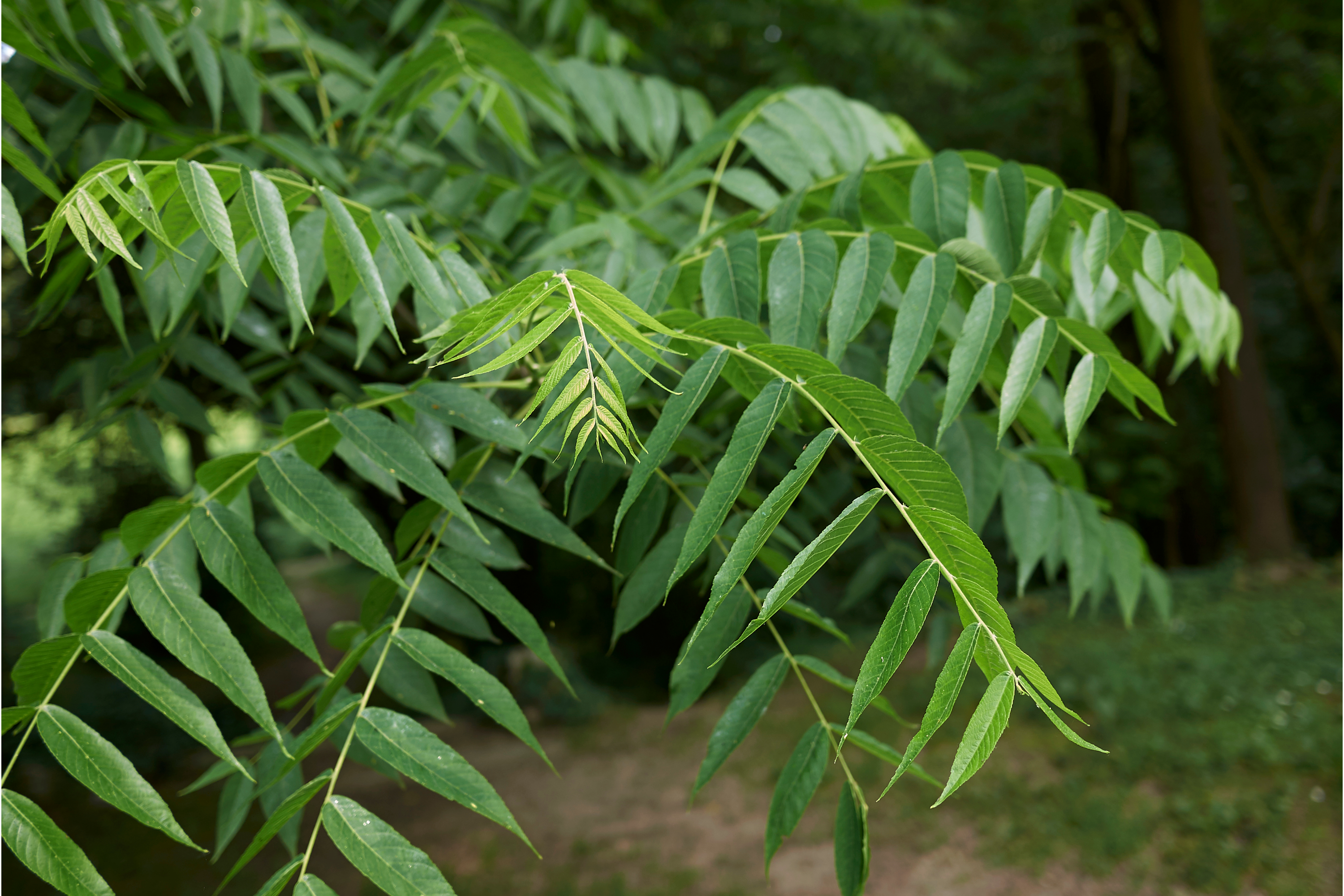Arizona walnut
(Juglans major)

Description
Juglans major (literally, the larger walnut), also known as Arizona walnut, is a walnut tree which grows to 50 ft tall (15 m) with a DBH of up to 0.61 metres (2 ft) at elevations of 300–2,130 m (1,000–7,000 ft) in Texas, Oklahoma, New Mexico, Arizona, and Utah. It also occurs in Mexico as far south as Guerrero Common names include Arizona black walnut (as it belongs to the "black walnuts" section Juglans sect. Rhysocaryon), and the Spanish name nogal cimarrón (cimarron walnut). In moister areas, the tree features a single, stout trunk; there are usually several slender trunks in drier situations. The 8–14 in long pinnately compound leaves bear 9–15 lanceolate leaflets, 19–32 mm (.75–1.25 in) wide by 51–102 mm (2–4 in) long. The small nut has a thick shell with deep grooves enclosing an oily, edible seed. Where the range of J. major overlaps that of J. microcarpa, the two interbreed, producing many intermediate forms. Walnut trees are any species of tree in the plant genus Juglans, the type genus of the family Juglandaceae, the seeds of which are referred to as walnuts. All species are deciduous trees, 10–40 metres (33–131 ft) tall, with pinnate leaves 200–900 millimetres (7.9–35.4 in), with 5–25 leaflets; the shoots have chambered pith, a character shared with the wingnuts (Pterocarya), but not the hickories (Carya) in the same family. The 21 species in the genus range across the north temperate Old World from southeast Europe east to Japan, and more widely in the New World from southeast Canada west to California and south to Argentina. Edible walnuts, which are consumed worldwide, are usually harvested from cultivated varieties of the species Juglans regia. China produces half of the world total of walnuts.
Taxonomic tree:







